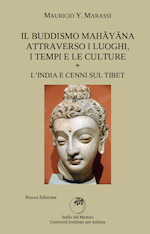Here we are living in an age with jet planes streaking through the sky while on the ground, gravel trucks race down paved roads—But what is this coming down the street! A figure in black robes and long open sleeves, with a black bag around his neck, a huge straw hat on his head and wearing white spats and straw sandals. He walks from door to door, holding a bowl in front of him, the times filled with laughter and tears. This is “takuhatsu,” mendicant begging by Buddhist priests. The bowl they carry is their eating bowl, it is the same practice of Buddhist monks throughout Asia since the time of Shakyamuni Buddha. People put either money or rice into the bowl and as it fills up, the priest empties the contents into the black cloth bag hanging around his neck. Today, at least in the cities, most donations are monetary, not food. The famous Japanese Zen monk Ryokan (1) lived by takuhtasu and wrote about it in his poems.iii Picture a warm spring day, the flowers in full bloom, the warblers singing away and beautiful butterflies flitting here and there. That surely must have been the setting for Ryokan’s walks through country villages from one farm house to the next. Children would run in delight to greet their familiar playmate. Ryokan, always happy to see the children, puts down his bowl and joins in the children’s games. Poor Ryokan, the day passed quickly while he was absorbed in the games with the children, completely unaware that all his rice has been eaten by the sparrows in the grass. The deep resonating sound of a nearby temple bell announces that it is the end of the day. The light of the early evening moon shines brightly and the children have all headed home. Suddenly, Ryokan feels a tinge of loneliness and heads back to his own grass hut. He turns and runs back to the village where he vaguely remembers having left his bowl hours before. Just picturing Ryokan all flustered returning to the village to fetch the bowl can’t help but bring a smile to my face. Of course, I would have liked my takuhatsu to have been that sort of idyllic, simple kind, too. Unfortunately, the reality of my life of takuhatsu was anything but that. In fact, it was the extreme opposite of the idyllic, simple takuhatsu lifestyle. If in going out on takuhatsu, you can do so with the attitude of, well, if people put something in my bowl, that’s fine and, if they don’t that’s okay, too, then you can say that your takuhatsu is ideal with no complications. However, I was unable to do that. I was dead serious about it, and I couldn’t hide my feelings. As long as I was going out, I felt I just had to bring home a certain amount of money–I had my quota to fill. Not only that, I felt I had to do it in the most efficient way, because I needed to get back to the temple as quickly as possible, so my story becomes even more pathetic. It wasn’t because I wanted to take a rest that I desired to get right back to the temple. Rather, besides takuhatsu, I had a lot of other work to do that made my going out all the more important. Knowing how much work waiting for me at the temple, there was no way I could ever feel what I was doing was in any way refined elegant or “spiritually uplifting.” But, everyone in the world has feelings of being pursued, and of living from hand to mouth. I am not talking about my presentday life. The period I’m talking about began in the summer of 1949, when I first arrived in Kyoto, and lasted until the spring of 1962. That is, from the age of 37 until I reached 50. So, perhaps because there is a certain amount of distance between those days and my life now, I am able to talk about the sweet and bitter of takuhatsu.
Notes:
1) Yamamoto Ryokan. (1758 ~ 1831) A Japanese monk who lived in the Edo period and was famous for his poetry and calligraphy.
Se volete, lasciate un commento.
You must be logged in to post a comment.







